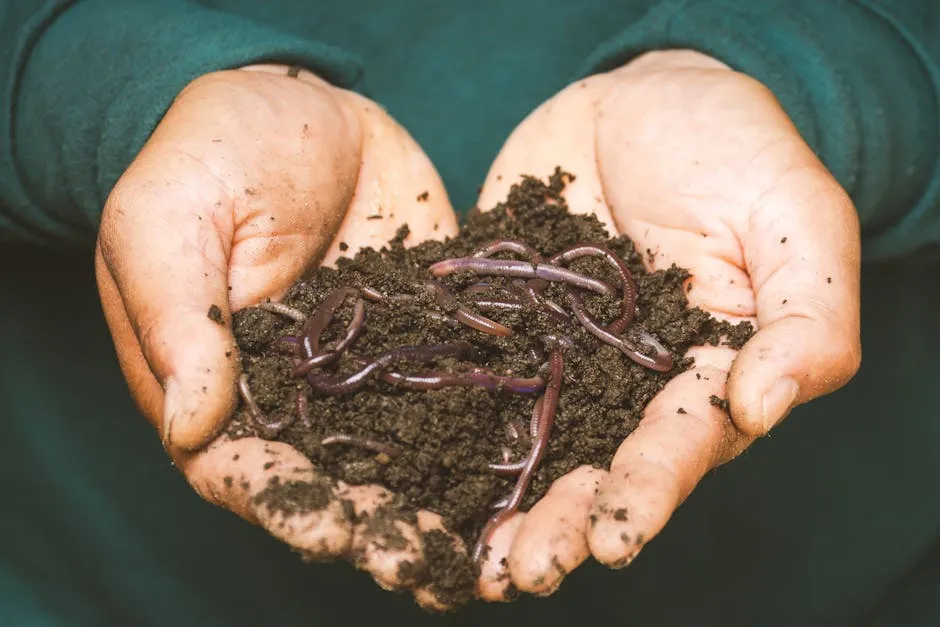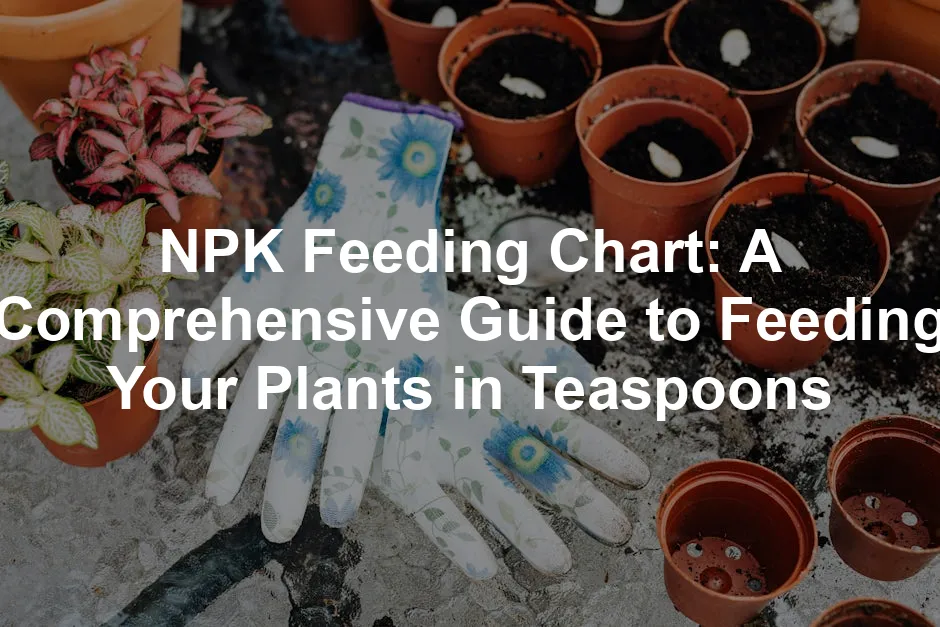Introduction
In the world of gardening, one undeniable truth reigns supreme: healthy plants lead to a bountiful harvest. But how do you ensure your green friends are getting all the nutrients they need? Enter the NPK feeding chart—a gardener’s best ally! Whether you’re growing vegetables, flowers, or cannabis, understanding how to measure and mix nutrients is essential. And while it may sound complicated, using teaspoons can simplify the process.
Let’s break it down. NPK refers to nitrogen (N), phosphorus (P), and potassium (K)—the holy trinity of plant nutrition. Each element plays a unique role in plant health. Nitrogen fuels leafy growth. Phosphorus promotes root development and flowering. Potassium enhances overall vigor and disease resistance. Sounds crucial, right?
Now, how do you apply this knowledge? That’s where the NPK feeding chart comes into play. It provides guidance on how much of each nutrient to use for various plants at different growth stages. It can feel overwhelming, but fear not! Using teaspoons takes the guesswork out of measuring.
And speaking of measuring, if you want to ensure your plants are getting the right nutrients every time, you might want to invest in a PPM Meter for Hydroponics. This handy device will help you determine the concentration of nutrients in your solution, ensuring your plants are getting just the right amount. No more guessing games!
In this guide, we’ll explore how to utilize NPK values effectively, convert measurements, and optimize your feeding schedule for thriving plants. We’ll also tackle some common misconceptions about nutrient feeding.
So grab your gardening gloves and a spoon, and let’s dig into the delightful world of nutrient feeding! With the right amounts and timing, you’ll unlock the secret to flourishing greenery. Your plants will thank you with vibrant growth and perhaps a few extra blooms. Now, let’s get our hands dirty and make those plants the talk of the garden!

Establishing PPM and Understanding Raw Products
Understanding parts per million (PPM) is vital for successful nutrient management. PPM indicates the concentration of nutrients in your solution. It helps you determine if your plants are receiving the right amount of nourishment. Too little can hinder growth, while too much can cause nutrient burn.
To maintain optimal PPM levels, start by knowing the PPM values of your raw products. Most nutrient products will provide this information. A typical PPM range for vegetative growth is between 800-1200 PPM. For flowering stages, you might aim higher, around 1200-1600 PPM. Monitoring these levels ensures your plants are thriving without being overwhelmed.
Now, how do you measure PPM? You can use a PPM meter, which is a handy tool for gardeners. Simply mix your nutrient solution, dip the meter, and voila! You have your PPM reading. If it’s too high, dilute it with more water. If it’s too low, add more nutrients.
And while you’re at it, consider getting a Soil pH Meter. This tool will help you understand the acidity or alkalinity of your soil, which can significantly affect nutrient availability. It’s like having a personal soil doctor at your disposal!
Timing your nutrient feedings according to growth stages is also crucial. Young seedlings need a lighter nutrient mix, often at the lower end of the PPM scale. As they mature, increase the concentration gradually.
This tailored approach ensures your plants access the right nutrients at the right times. Remember, plants are like us; they don’t like being overwhelmed with too much of a good thing!
When it comes to nutrient feeding, common misconceptions abound. Many gardeners believe that more nutrients equal better results. This simply isn’t true. Overfeeding can lead to nutrient lockout, where plants can’t absorb the nutrients they need, resulting in poor growth and yellowing leaves.
To avoid these pitfalls, always refer to your NPK feeding chart. It provides clear guidelines on how many teaspoons of each nutrient to use at different growth stages. Following these recommendations will lead to healthier plants and a more productive garden.
In conclusion, understanding PPM and how to interpret it is essential for effective nutrient management. Combine this knowledge with a solid feeding schedule and your plants will surely thrive. Keep an eye on those PPM levels, and your garden will flourish like never before!

Converting Measurements: Teaspoons vs. Grams
Why Use Teaspoons?
Home gardeners often find measuring nutrients a bit tricky. Enter teaspoons—the unsung heroes of the gardening world! Using teaspoons has several advantages. First, they’re easily accessible and familiar. Most folks have them tucked away in the kitchen. No fancy scales or conversion calculators required. Just grab a spoon and start feeding!
Teaspoons also simplify the process for beginners. Measuring in teaspoons allows for straightforward adjustments. If your plant seems a bit hungry, add another teaspoon. If it’s looking a tad too green, reduce the dosage. This flexibility can make all the difference in your garden’s success.
Additionally, teaspoons promote consistency. Many feeding charts provide measurements in teaspoons, making it easier to follow along. This means less confusion and more thriving plants. Plus, when you share your gardening journey with friends, you can easily explain your nutrient routines. “Oh, I just added two teaspoons of nitrogen!” sounds much simpler than “I mixed 10 grams of this and 15 grams of that.”
And don’t forget to protect your hands while you garden! A pair of Garden Gloves can save you from scratches and dirt, allowing you to dig in with confidence. Plus, they come in various styles, so you can look good while getting your hands dirty!

Conversion Basics
Now, let’s talk numbers. Converting measurements between teaspoons and grams can be a piece of cake once you know the basics. For instance, 1 teaspoon equals approximately 5 milliliters. But, when it comes to grams, the conversion can vary depending on the substance.
Generally, for dry nutrients, the conversion can be approximated. For example, 1 teaspoon of a typical dry fertilizer weighs around 4 to 6 grams. Always check specific product labels for accurate conversion rates. It’s your nutrient Bible!
To illustrate, if you need 15 grams of fertilizer, you could use about 3 to 4 teaspoons, depending on the product’s density. This simple conversion can save you time and ensure your plants get just the right amount of nutrients.
But let’s not forget about the soil! Using High-Quality Potting Soil is crucial for healthy plant growth. It provides the right nutrients and drainage, making it a must-have for any gardener!

Practical Applications
Creating a conversion chart for common nutrients can be a lifesaver. You can keep it handy in your garden shed or even on your fridge. Here’s a quick reference for some popular nutrients:
- Nitrogen (N): 1 tsp ≈ 5 grams
- Phosphorus (P): 1 tsp ≈ 4 grams
- Potassium (K): 1 tsp ≈ 5 grams
With this chart, you can easily measure your nutrients without fumbling around with scales. Whether you’re watering your tomatoes or nurturing your orchids, having these conversions at your fingertips will make the process smoother and more enjoyable.
By using teaspoons and understanding these conversions, you’ll feel empowered in your gardening journey. No more guesswork—just precise, effective feeding methods to help your plants flourish! Now, let’s move on to the NPK feeding charts tailored for different plants, where you’ll see how these conversions come into play.

NPK Feeding Charts for Different Plants
Vegetables
When it comes to growing vegetables, each plant type has specific NPK requirements. For instance, leafy greens like spinach thrive on higher nitrogen levels. A typical feeding chart might suggest 2 teaspoons of a balanced NPK fertilizer (10-10-10) every two weeks during their growing phase. Root vegetables, like carrots, prefer a boost of phosphorus. Using 1 teaspoon of a phosphorus-rich fertilizer (5-20-5) can promote deeper root development.
To make your vegetable garden even more successful, consider using Organic Fertilizer. It’s a great way to enrich your soil naturally and promote healthier growth without the harsh chemicals!

Flowers
Flowering plants have unique nutrient needs too. For vibrant blooms, a chart might recommend 1.5 teaspoons of a high potassium fertilizer (10-10-20) during the flowering stage. This ensures your flowers get the nutrients necessary for robust growth and stunning colors. Remember, timing is key here!
To keep your garden looking its best, consider using Flower Seed Packets for a colorful display. Planting a variety of flowers can attract beneficial pollinators to your garden, enhancing its beauty and productivity!

Cannabis
Cannabis plants are notorious for their specific nutrient needs. Each growth stage demands different NPK ratios. A common chart suggests 3 teaspoons of a nitrogen-heavy fertilizer (15-5-10) during the vegetative stage. As the plant transitions to flowering, switch to 2 teaspoons of a phosphorus and potassium blend (5-15-15) to enhance flower production and potency.
For cannabis enthusiasts, a Indoor Plant Grow Light can make a world of difference, especially if you’re growing indoors. These lights provide the necessary spectrum for optimal growth, ensuring your plants thrive no matter the season!
These tailored NPK feeding charts in teaspoons make it easy to cater to the unique needs of your plants. From vegetables to cannabis, understanding these nuances will lead to a flourishing garden that’s the envy of all your gardening friends!

Feeding Schedule: Timing is Key
Growth Stages and Nutrient Needs
Plants go through several growth stages that affect their nutrient requirements. Understanding these stages is crucial for providing the right nutrients at the right time.
- Seedling Stage: During this phase, plants need minimal nutrients. A gentle nutrient solution around 200-400 PPM is ideal. Use a quarter teaspoon of your balanced NPK formula every two weeks.
- Vegetative Stage: As plants grow, they need more nitrogen for leafy growth. Increase your PPM to around 800-1200. Use about 1 teaspoon of a nitrogen-rich fertilizer weekly.
- Early Bloom Stage: When plants start flowering, they shift nutrient needs. Adjust your PPM to 1200-1400. A balanced NPK solution at 1.5 teaspoons will support blooming.
- Full Bloom Stage: At this stage, potassium and phosphorus become crucial. Aim for 1400-1600 PPM and increase your dosage to 2 teaspoons of a bloom-focused fertilizer.
- Ripening Stage: As plants prepare for harvest, reduce nutrient feeding. Drop the PPM back to 800-1000 and use just 1 teaspoon of a low-nitrogen formula.
This breakdown helps you cater to your plants’ changing needs, ensuring they get the right nutrients at the right times. And while you’re at it, don’t forget to keep your plants hydrated with a Watering Can with Measurement Markings. This will help you accurately measure out the right amount of water for your plants!

Sample Feeding Schedule
Here’s a practical feeding schedule for home gardeners, using teaspoons for simplicity:
- Weeks 1-2 (Seedling): 0.25 tsp NPK every two weeks.
- Weeks 3-4 (Vegetative): 1 tsp NPK weekly.
- Weeks 5-6 (Early Bloom): 1.5 tsp NPK weekly.
- Weeks 7-9 (Full Bloom): 2 tsp NPK weekly.
- Weeks 10-12 (Ripening): 1 tsp low-nitrogen formula every two weeks.
This schedule provides a clear roadmap for nutrient feeding. Adjust as necessary based on your plants’ responses. The aim is to create a vibrant, healthy garden where plants thrive at every stage. Happy gardening!

Common Mistakes in Nutrient Feeding
Overfeeding vs. Underfeeding
Ah, the classic gardener’s dilemma: overfeeding or underfeeding your plants. It’s like trying to decide between a hearty feast or a light snack. Too much fertilizer can lead to nutrient burn. Leaves might yellow or turn crispy. If your plants are looking more like crispy fries than fresh greens, you might have overdone it. The solution? Flush the soil with water to dilute those excess nutrients.
On the flip side, underfeeding can lead to sad, droopy plants. A lack of nutrients can cause stunted growth and yellowing leaves. If your plant looks like it’s auditioning for a sad movie, it’s time to assess your feeding routine. To remedy this, give your plant a nutrient boost. Start with a lighter dose and gradually increase. Remember, moderation is key!
And for those pesky pests, consider using an Organic Pest Control Spray. It’s a safe and effective way to keep your plants protected without harming the environment!

Misunderstanding NPK Ratios
Let’s talk NPK ratios. These numbers can seem like a secret code, but fear not! NPK stands for nitrogen, phosphorus, and potassium—each vital for plant health. The first number represents nitrogen levels, promoting leafy growth. The second is phosphorus, crucial for root development and flowering. The third is potassium, enhancing overall plant vigor.
To apply NPK ratios correctly, read your feed chart carefully. If your chart suggests a 10-20-10 ratio, you’ll need to adjust your measurements accordingly. It’s all about balance! Don’t just eyeball it; precision matters in feeding. Using teaspoons makes this much easier. Keep your NPK chart handy and follow the recommendations closely, ensuring your plants receive the right nutrients for their growth stage. When in doubt, consult your chart to avoid any nutrient faux pas.

FAQs
Please let us know what you think about our content by leaving a comment down below!
Thank you for reading till here 🙂
For a deeper understanding of effective nutrient management, refer to this guide on applied statistics masters programs online.
All images from Pexels




